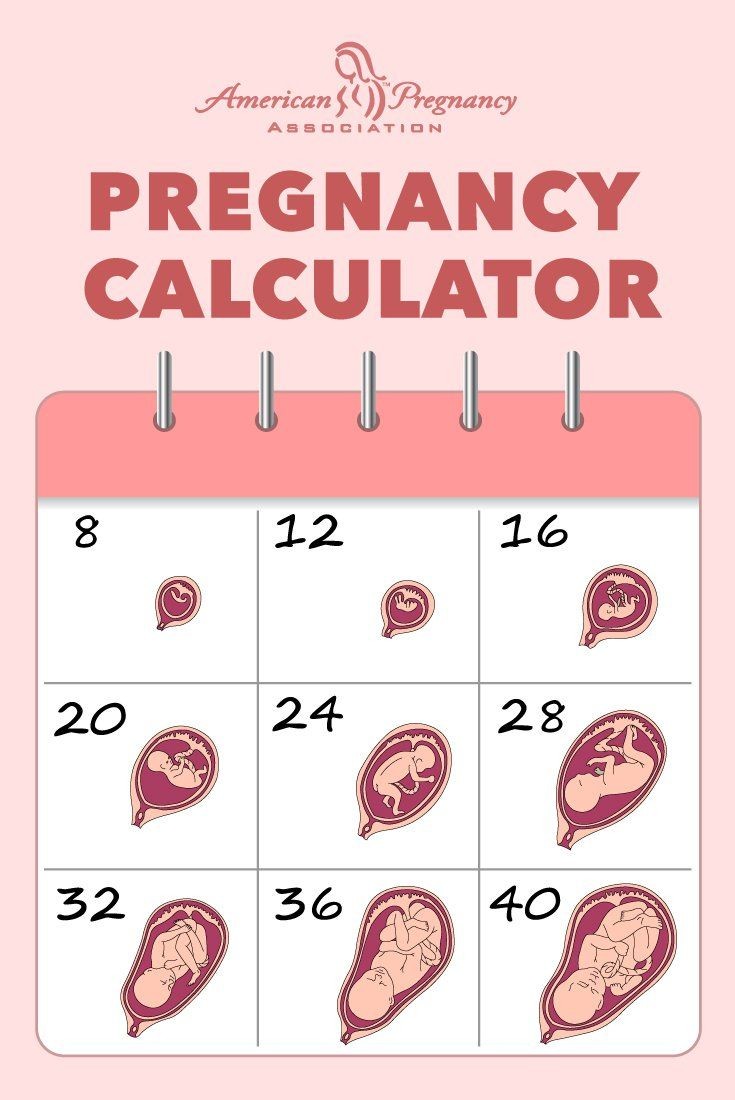
Contents
Pregnancy Due Date Calculator
A typical pregnancy lasts 40 weeks from the first day of your last menstrual period to the birth of your baby. Pregnancy is divided into three stages: first trimester, second trimester, and third trimester. You and your baby will experience changes throughout these trimesters.
First Trimester: Week 1 (Conception) – Week 12
A missed period may indicate pregnancy. Hormonal changes affect every organ. Signs of early pregnancy may include:
- Extreme fatigue
- Tender, swollen breasts
- Nausea with or without vomiting
- Cravings or aversion to certain foods
- Mood swings
- Constipation
- Frequent urination
- Headache
- Heartburn
- Weight gain or loss
Changes in the first trimester may affect your daily routine. Some women feel discomfort, while others don’t. Each pregnancy is different.
Week 4
Your baby is now an embryo at 1/25 of an inch long and begins to develop:
- Nervous system (brain and spinal cord)
- Heart
- Arm and leg buds
Week 8
The embryo develops into a fetus. Fetal development entails:
- All major organs have begun to form.
- The baby’s heart begins to beat.
- The arms and legs grow longer.
- Fingers and toes have begun to form.
- Sex organs begin to form.
- The face begins to develop features.
- The umbilical cord is clearly visible.
By the end of week 8, the baby is nearly 1 inch long and weighs less than an ounce.
Week 12
Your baby is now about 3 inches long and weighs almost 1 ounce. By week 12:
- The nerves and muscles begin to work together. Your baby can make a fist.
- The external sex organs show if your baby is a boy or a girl.
- Eyelids close to protect the developing eyes. They will not open again until week 28.
- Head growth has slowed.
Second Trimester: Week 13 – Week 28
Nausea and fatigue may lessen or go away, and you may notice more changes in your body. Your "baby bump" will start to show. By the end of the second trimester, you may feel your baby move.
Changes in the second trimester include:
- Aches and pains in the back, abdomen, groin, or thighs
- Stretch marks on your abdomen, breasts, thighs, or buttocks
- Darkening of the skin around your nipples
- A line on the skin running from the belly button to the pubic hairline
- Patches of darker skin, usually over the cheeks, forehead, nose, or upper lip
- Numb or tingling hands
- Itching on the abdomen, palms, and soles of the feet
- Swelling of the ankles, fingers, and face
Contact your doctor if you have certain symptoms. If you notice sudden or extreme swelling or gain a lot of weight quickly, call your doctor immediately.
Week 16
Your baby is now about 4 to 5 inches long and weighs almost 3 ounces. Further developments include:
- The musculoskeletal system continues to form.
- Skin begins to form and is nearly translucent.
- Meconium develops in your baby’s intestinal tract.
- Your baby begins sucking motions with the mouth.
Week 20
Now halfway through your pregnancy, your baby is about 6 inches long and weighs about 9 ounces. This means:
- Your baby is more active.
- Your baby is covered by fine, feathery hair called lanugo and a waxy protective coating called vernix.
- Eyebrows, eyelashes, fingernails, and toenails have formed.
- Your baby can hear and swallow.
Week 24
Your baby now stores fat, weighs about 1½ pounds, and is 12 inches long. Developments include:
- The baby’s bone marrow begins to make blood cells.
- Taste buds form on your baby’s tongue.
- Footprints and fingerprints have formed.
- Hair begins to grow on your baby’s head.
- Although the lungs have begun to form, they do not yet work.
- If your baby is a boy, his testicles begin to descend into the scrotum.
- If your baby is a girl, her uterus and ovaries are in place, and a lifetime supply of eggs has formed in the ovaries.
Third Trimester: Week 29 – Week 40 (Birth)
The third trimester is the final stage of pregnancy, with continued discomforts. As the baby grows, you may have difficulty breathing and have to urinate more frequently. These problems should go away after giving birth. Physical changes you may notice include:
- Swelling of the ankles, fingers, and face
- Hemorrhoids
- Tender breasts, which may leak colostrum
- A protruding belly button
- The baby "dropping," or moving lower in your abdomen
- Contractions, which can be a sign of real or false labor
- Shortness of breath, heartburn, and difficulty sleeping
Other changes are happening in your body that you can’t see. Your cervix becomes thinner and softer as you approach your due date. Your doctor will monitor the progress of your pregnancy with regular exams.
If you notice sudden or extreme swelling or gain a lot of weight quickly, call your doctor immediately.
Week 32
Your baby now gains about ½ pound a week, weighs about 4 to 4½ pounds, and is about 15 to 17 inches long.
- Your baby’s bones are soft but fully formed.
- Movements and kicking increase.
- Your baby’s eyes can open and close.
- Although the lungs have not fully formed, "breathing" movements occur.
- Your baby’s body begins to store vital minerals.
- Lanugo (fine hair) begins to fall off.
Week 36
Your baby is now about 16 to 19 inches long and weighs about 6 to 6½ pounds.
- The protective waxy coating (vernix) thickens.
- Body fat increases.
- Movements are less forceful.
Week 37-40
By the end of 37 weeks, your baby is considered full-term. Your baby’s organs are capable of functioning on their own.
As you near your due date, your baby may turn into a head-down position for birth.
The average birth weight is between 6 pounds 2 ounces to 9 pounds 2 ounces, and the average length is 19 to 21 inches long. Full-term babies come in many different weights and sizes.
Centers for Disease Control and Prevention (CDC): "Pregnancy."
Womenshealth.gov: Centers for Disease Control and Prevention (CDC): "Stages of Pregnancy."
National Institutes of Health
National Institutes of Health


